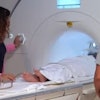A group that included employees of French digital detector maker Trixell acquired hand radiographs with a digital detector with 85-micron pixel size. They then applied a software-based technique to the data to simulate images acquired with detectors with pixel sizes ranging from 100 to 200 microns.
The images with variable pixel sizes were distributed randomly into three reading sessions, and three experienced musculoskeletal radiologists were asked to draw a region of interest around each abnormality in the metacarpal joints and classify it by type of fracture: erosion, demineralization, and geode.
Next, two other radiologists reviewed their work, determining if abnormalities were actual and the classification accurate. Finally, the results of the two readings were compared to calculate the detection rate and identification rate for each pixel size.
The readers found an overall detection rate of 40% for the three original readers, and they found little association based on the pixel size of the detector used. Once detected, there was a high probability (close to 80%) of an abnormality being correctly identified, but pixel size had no impact in this area either.


















